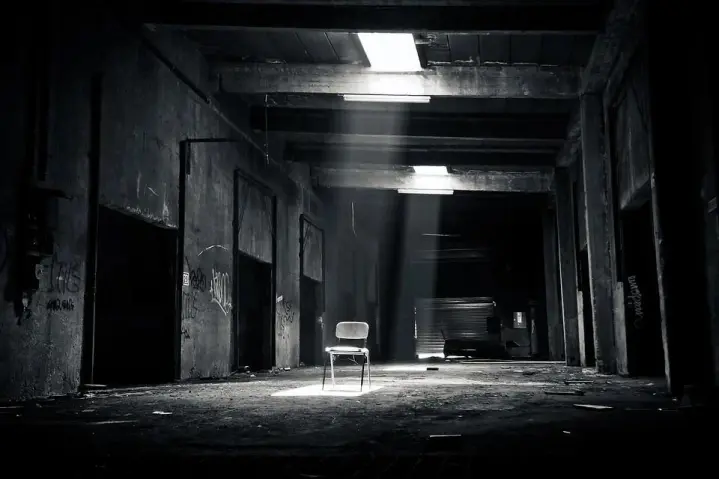
On Zoom, no one can hear you scream. But since our return to the office, those quiet corners and private meeting rooms might be proving in high demand.
Whether it’s for personal or professional, or the inextricable intersection of the two, nearly everyone who passes time in an office will have at least once had a meltdown there.
A 2019 survey by the job-search website Monster.com showed that, of more than 3000 respondents, nearly 85% said they had cried at work. A more recent survey by a temp agency of a similar sample size showed that 52% had lost their temper.
And that was pre-pandemic. Now it seems that workers are increasingly pursuing their own strategies for releasing tension, some surprisingly primal.
In the new season of financial drama Industry – which premieres on BBC One on Tuesday night – strung-out City workers flee to toilet cubicles to self-medicate with caffeine, nicotine and harder stuff in a desperate effort to keep on even keel.
For those without an expenses budget, stepping outside the office might be our only option.
A new survey of 1,000 office workers carried out for Leadenhall market found that going for a breather was the most common way for office workers to let off steam, followed by a walk around the block.
Now those who find themselves stressed out in the City can seek out something stronger (and no, it’s not served by the pint at The Lamb Tavern).
Next week Leadenhall market is staging a free “Screamatorium”: an enclosed, private space in which to scream your heart out.
Catherine Jordan Jones, a spokesperson for Leadenhall market, believes it is the only such facility of its kind in the UK. “Now it’s back to work, back to school, people might be feeling a little bit blue – it’s just a fun way of letting go.”
For those who are competitive-minded, a staffer will be on hand to measure the decibels of each scream and maintain a leaderboard. (90-130dB is the average.)
Afterwards, participants can wring out every last drop of aggression in a game of whack-a-mole, before winding down in a neighbouring meditation room, with some breathing exercises – and sugary carbohydrates, in the form of free cake.
“I think it’s a good combination: scream, whack, cake,” says Jordan Jones. “Who wouldn’t be happy after that?”
“Primal scream” therapy was a touchstone of 1970s self-help, but lacks scientific basis, says Harold Gouzoules, a professor at the department of psychology at Emory University and an expert in screams – both human and non-human.
“We are all familiar with the release that comes from a good yell, or a good scream – but, for some people a good cry, or a good laugh, or hitting a punching bag, serves the same purpose,” he says.
“There is certainly tension, and release of tension – but I don’t think screaming has any kind of primacy, in terms of the way to go about it.”
Indeed, if the thought of screaming into the void holds dangerous allure, the reason might be simple: we enjoy it.
Gouzoules points to the popularity of haunted house attractions and theme parks; one study found that people told not to scream on a rollercoaster reported enjoying themselves less.
“There is that fun aspect,” says Gouzoules – though, he adds, he himself does not share in it. “I’m not a screamer. I try to be a laugher.”
But with the mental health crisis worsening since the pandemic, and therapy increasingly unaffordable, it may be no surprise that there is apparently mounting demand for appropriate places in which to let loose.
Gemma Whiddett, manager of Norwich Rage Rooms, says business has never been busier. The facility rents out fortified rooms filled with ceramics for smashing by the half-hour, and has emblazoned above its front door: “Anger is a gift.”
“I don’t think people really got it, at first,” Whiddett says.
But, over the past year, not only has there been a surge of interest; people are coming with specific reasons for release.
On top of the standard stag dos, says Whiddett, “we’ve got people coming in the day before a funeral, people recovering from drink and drug addictions … It’s not just fun any more: people have a real reason to come in.”
She recalls a recent customer: “She spent five minutes smashing, 40 minutes sitting on the floor crying – and she actually left smiling.”
Another man booked in after having been turned down for a promotion. “People are realising there is a use for the rage room,” says Whiddett. “We get a lot of people who work in hospitality – and primary school teachers.”
Andy Reynolds opened Smash Space, Newcastle’s first and only rage room a year ago, and has since had more than 3000 people through the doors.
He had anticipated that the target market would be students; in fact it has proved overwhelmingly to be 30- to 50-year-olds, working full-time.
Reynolds has even heard of psychiatrists referring patients for a cathartic smashing session. “There’s been a big uptake on the mental health aspect,” he says. “We’re living in a stressful world, and people have difficult jobs, and it’s good for them to have that outlet – even just of having fun with your friends.”
Reynolds himself works as a legal adviser at the Ministry of Justice five days a week, meaning it has been almost a year since his last session. “That may be my error,” he jokes.
Sometimes, real life does get in the way of release. In 2021, a large clay “scream pot” on display at the Victoria and Albert Museum – and imagined as a safe space for visitors to express their frustrations in public – had to be cordoned off due to the risk of spreading Covid-19. (The Screamatorium, first slated for the period of mourning for the Queen, was likewise “postponed as a mark of respect”.)
Instead, the function of the scream pot – by the Iranian-Canadian artist, Babak Golkar, from his 2014 series Time to Let Go – was demonstrated by video. “It was not what I intended,” says Golkar from Vancouver. “You have to be able to put your face against that object, and try it.”
Golkar started making his scream pots in 2011, seeking both to expand his practice with clay – and an outlet for his own repressed emotions. “It’s really difficult to pinpoint what the origins of those frustrations were,” he says, “but suffice to say, they must have been piling up for a while.”
Golkar has since made several terracotta scream pots – the largest person-sized, up to 2 metres long – with a muffling effect.
“It’s such a basic thing, to scream: if a child screams in public, nobody turns their head – but if I scream in public they’ll call the authorities,” he says. “I was really interested to engage the public – to offer them a platform, or an excuse.”
For six months in 2014, some of Golkar’s larger scream pots were installed outside the Shangri-La hotel in Vancouver, commissioned by the Vancouver Art Gallery, set on a pile of sandbags and pointed directly at what was then the Trump International hotel nearby.
It was one of the most popular pieces of public art ever at that site, says Golkar. “I wish I had more projects like this one, that just keeps getting more and more relevant.”
He has even received requests to mass-produce scream pots for personal use. One critic suggested everyone should have one, Golkar says. “The world would be a happier place, I think.”
The Screamatorium is open at Leadenhall market in London from Tuesday 27 to Friday 30 September, from 11.30am-7pm daily with free admission and no need to book.

By Elle Hunt – theguardian.com









